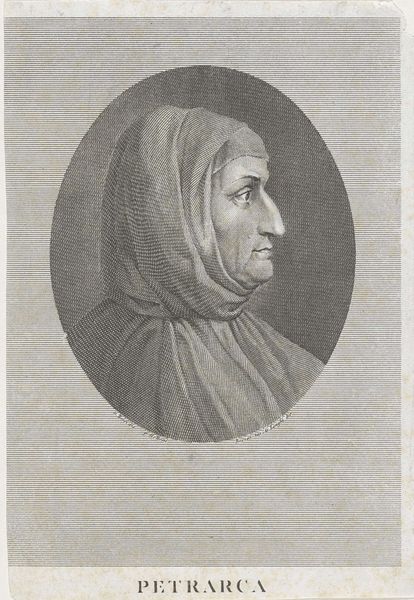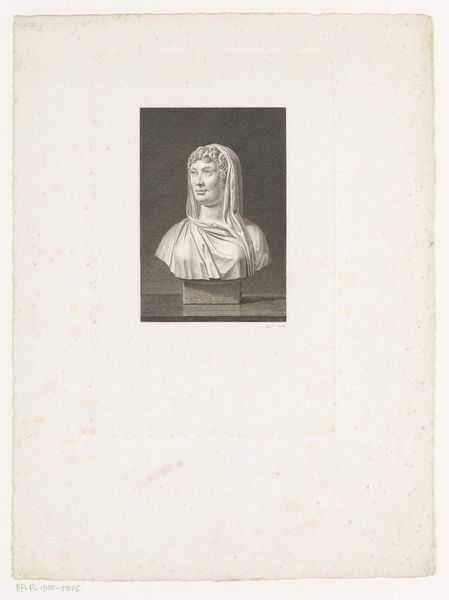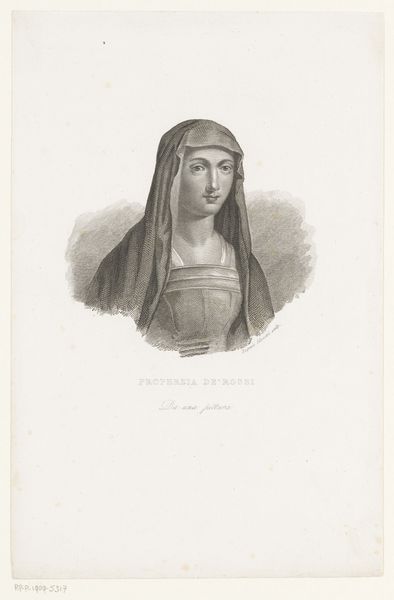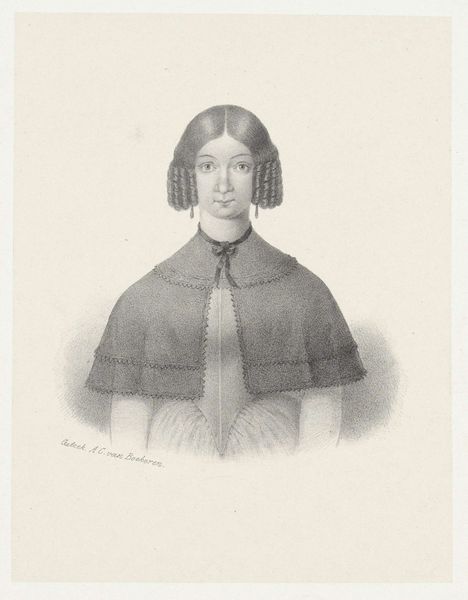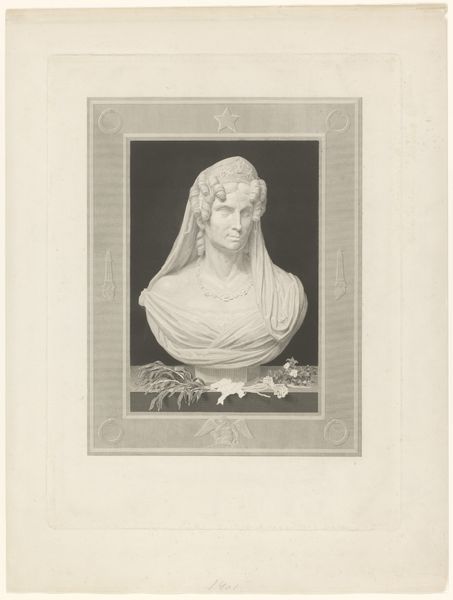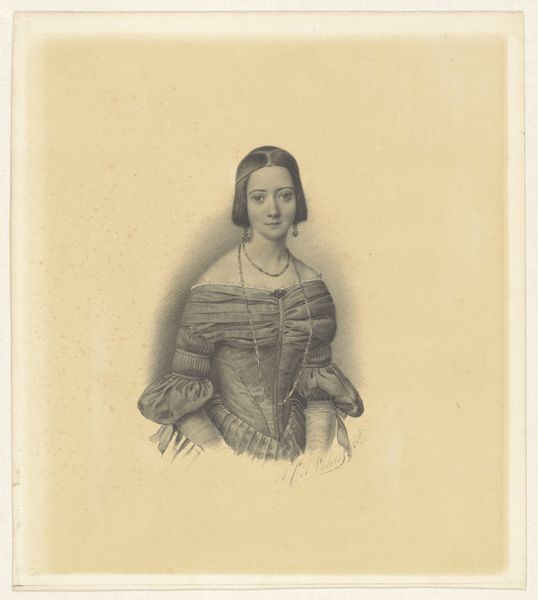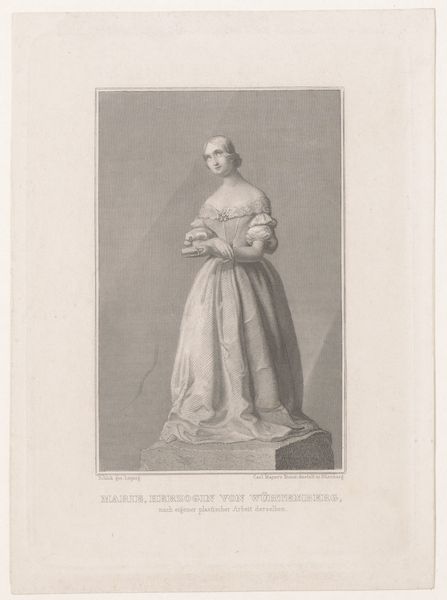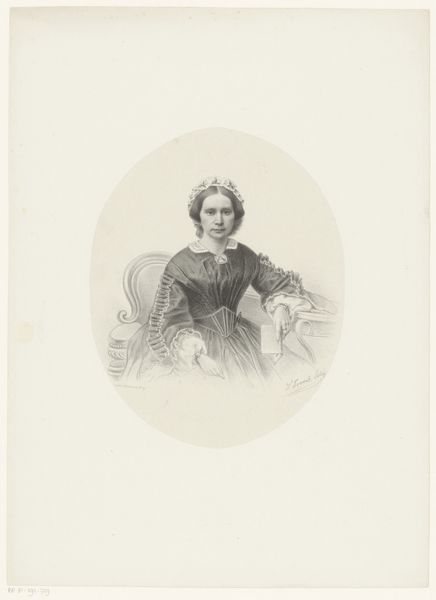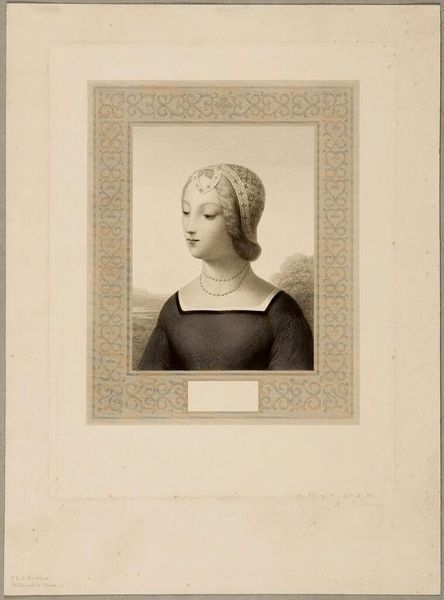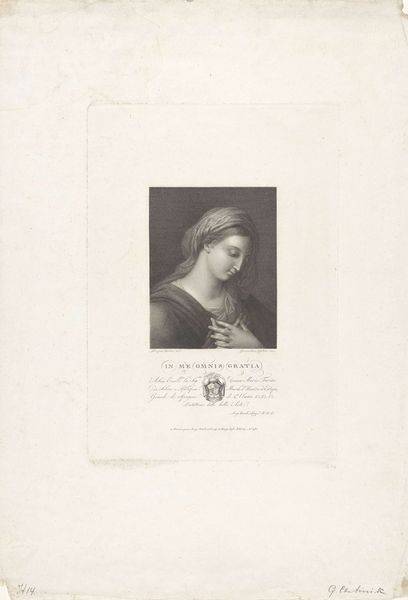
print, graphite, engraving
#
portrait
#
light pencil work
# print
#
graphite
#
history-painting
#
graphite
#
engraving
#
realism
Dimensions: height 246 mm, width 166 mm
Copyright: Rijks Museum: Open Domain
Editor: Here we have Jan Frederik Christiaan Reckleben's "Portret van Margaretha van Oostenrijk," created between 1847 and 1849. It’s a print, with graphite and engraving. It’s a fairly straightforward portrait, but I wonder what informed the artist's decision to revisit this historical figure so much later? What do you see in this piece in terms of its historical context? Curator: It's intriguing, isn't it? While appearing to be a simple portrait, we must remember that 19th-century art was often deeply engaged with nation-building and the construction of historical narratives. Reproducing portraits of historical figures like Margaretha, Archduchess of Austria, wasn’t merely about depicting an individual; it was about invoking a specific understanding of the past. Who do you think this portrait was intended to appeal to and what values does it signal? Editor: Maybe the rising middle class? It’s a print, making it more accessible, and perhaps it’s trying to connect them to a glorious, maybe even nationalistic, past? Curator: Precisely! The choice of Margaretha, who served as Governor of the Habsburg Netherlands, is significant. Reckleben is very consciously constructing an image rooted in political power. Consider, too, that this image, distributed via print, would have helped standardize her visual representation, solidifying her place within the national consciousness. Editor: That's fascinating. I hadn't considered how a seemingly straightforward portrait could play such an active role in shaping historical memory and solidifying national identity. I'm now wondering how else printed images reinforced certain narratives. Curator: Exactly. Reflecting on these questions broadens our understanding of how historical portraiture functions beyond mere likeness, particularly in the 19th-century political climate. It makes you rethink the intention, doesn’t it?
Comments
No comments
Be the first to comment and join the conversation on the ultimate creative platform.
